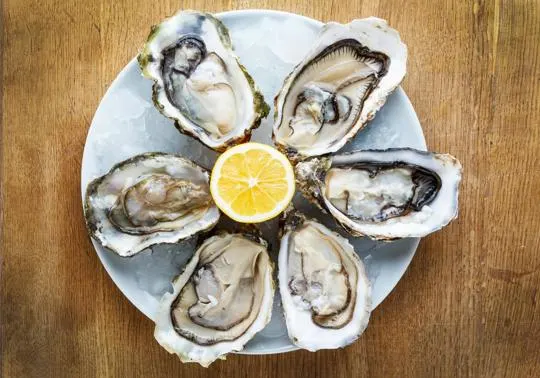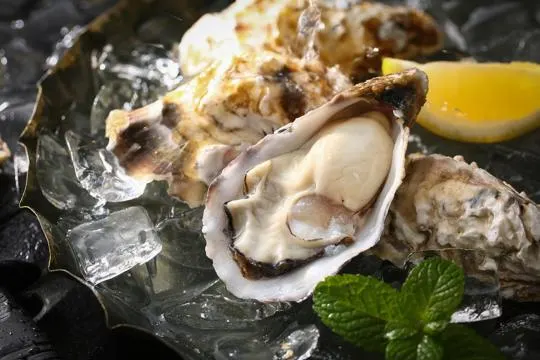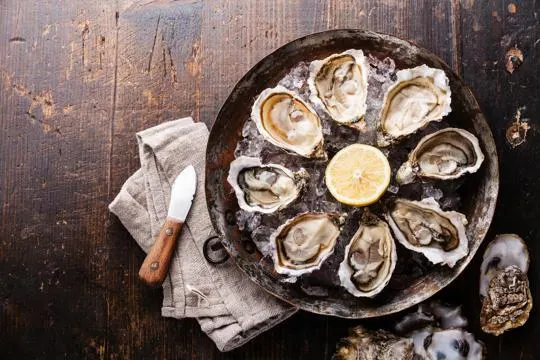Summary of key points
The primary distinction between East Coast and West Coast oysters is their flavor profiles and textures, influenced by their environments. East Coast oysters tend to be saltier and have a smoother, more uniform shell shape, reflecting the Atlantic’s colder waters. West Coast oysters, from the Pacific Ocean, often have a sweeter, more cucumber-like taste and feature deeper, ridged shells, showcasing the diversity of marine habitats.
Ever wondered why oysters at one coast don’t taste quite like the ones from the other? We’ve got the scoop on the East Coast vs West Coast oyster rivalry.
It’s a clash of the titans, sea edition. Each coast boasts its unique flair. The differences? They’re like night and day, folks.
Our first encounter with this oceanic puzzle had us scratching our heads. Why the divergence in taste? Is it the water? The climate?
Turns out, it’s a bit of both and then some. East Coast oysters, they’re like the briny deep-sea divers of the oyster family. Brimming with that classic salty kick. West Coast oysters? Think of them as the laid-back, surfer cousins. Sweeter, smaller, with a cucumber finish.
We’ve spent more dinners than we can count debating our favorites. Our conclusion? It’s a tie, wrapped in a mystery, inside an oyster shell.
What is East Coast Oyster?

East Coast oysters are a special type of oyster found along the US east coast.
They boast a distinct taste and texture that stands apart from the West Coast.
These oysters have briny and mineral flavors, which come from the waters they live in.
Many prefer them for their firmer texture, great for raw consumption or grilling.
An intriguing thing about these oysters is they show off their growing region.
For instance, New England oysters have a crisp, clean flavor, while Chesapeake Bay oysters have a savory, buttery taste.
Plus, East Coast oysters usually come in smaller sizes than West Coast varieties.
This makes them desirable for those who want a more delicate bite.
What is West Coast Oyster?

West Coast Oyster – an oyster found along the western coast of the US.
It has a distinct flavor, from the cold waters and nutrient-rich environment of the region.
Its taste is briny, with cucumber and melon hints.
Seafood lovers love it for its unique flavor.
Plus, it has a firmer texture than East Coast oysters.
So, if you want a flavorful oyster experience, try West Coast Oyster.
Differences Between East Coast and West Coast Oysters

East Coast and West Coast oysters are different.
1 – Species and Varieties
Oysters are a delicacy many enjoy. But, not all oysters are the same.
You can find distinct species and varieties on the East Coast and West Coast.
The most popular East Coast oyster is the Crassostrea virginica, also known as the Eastern oyster.
It loves brackish water in the Atlantic Ocean and Gulf of Mexico.
People love it for its firm texture and buttery taste with notes of salt and minerals.
Meanwhile, the West Coast is home to Crassostrea gigas, or the Pacific oyster.
These oysters thrive in the colder waters of the Pacific Ocean.
They have a delicate texture and a sweeter, milder flavor.
On the East Coast, you can find varieties like Wellfleets from Cape Cod or Blue Points from New York.
Each has its own unique taste and appearance.
On the West Coast, you have choices like Kumamotos from Washington or Miyagis from California.
They offer a range of flavors and textures to tantalize your taste buds.
Whether you prefer Eastern or Western oysters, your plate will be full of nature’s diversity.
Embark on a culinary adventure to explore both coasts.
2 – Flavor Profile
East Coast oysters have a signature briny, mineral taste.
Plus, hints of seaweed and a crisp finish. West Coast oysters are sweet and creamy.
They have a buttery texture and flavors like melon or cucumber.
Why the difference? Factors like salinity, temperature, and algae in each area.
Enjoy the exciting culinary experience of contrasting flavors between East and West coasts.
A treat for oyster aficionados.
3 – Size and Shape
When it comes to oysters, size and shape matter a lot.
East Coast and West Coast oysters are the same species, but differ in these areas.
East Coast oysters are usually larger and plumper, with thicker and harder shells.
West Coast oysters are smaller but come in unique shapes.
These give each variety its own flavors.
But, water salinity, temperature, and algae availability also affect oyster taste.
Both Coasts offer variations that make their oysters popular worldwide.
4 – Salinity and Terroir
East Coast and West Coast oysters differ in flavor due to salinity and terroir.
East Coast oysters have a brinier taste from higher salt content.
West Coast oysters are milder and sweeter because of lower salinity.
The minerals and nutrients in the water also make them unique.
Terroir is a big factor too.
East Coast oysters grow in sheltered estuaries with a mix of freshwater and saltwater.
This makes them rich and robust.
West Coast oysters live along rocky coastlines with colder waters, making them firmer with delicate flavors.
When you taste East Coast and West Coast oysters side by side, you can appreciate their nuances.
Their coastal homes give them different culinary experiences.
So savor their briny or sweet notes and how they embody their home.
Similarities Between East Coast and West Coast Oysters

East Coast and West Coast oysters have differences, yet they also share similarities.
Both offer a yummy taste.
- A similarity is their origin. East Coast oysters come from regions such as New England and Mid-Atlantic states; whereas, West Coast oysters are from California and Washington state.
- They both have a briny flavor. East Coast oysters are saltier, whereas West Coast oysters have a mix of sweet and salty.
Also, oysters on both coasts help local economies and culinary traditions.
Fishing industries get a boost, coastal ecosystems are improved, and people can enjoy fresh seafood.
Plus, regional dishes are made with oysters, like Oysters Rockefeller and Oyster Po’ Boys.
Although East Coast and West Coast oysters differ in species variety, farming techniques, water conditions, and shell shapes/sizes – these distinctions add to the oyster experience.
To truly appreciate the diverse flavors from coastal regions, it helps to understand the nuances.
Popular East Coast and West Coast Oyster Regions
East Coast and West Coast have some of the world’s most popular oyster regions.
Each has its own unique flavors and attributes that oyster lovers appreciate.
On the East Coast, try out Cape Cod in Massachusetts, Chesapeake Bay in Maryland, or Long Island Sound in New York.
These regions are known for briny, mineral-rich oysters, due to the cold Atlantic Ocean.
Meanwhile, West Coast oysters come from Puget Sound in Washington, Tomales Bay in California, or Willapa Bay in Oregon.
They have a sweeter, creamier taste due to the warmer Pacific Ocean.
The diverse water conditions give West Coast oysters various flavors and textures.
East Coast and West Coast oysters also look different.
East Coast ones have rough shells with deep cups, and West Coast ones have smoother shells with flatter shapes.
Both coasts have amazing oysters, so it comes down to personal preference.
Craving a briny East Coast oyster, or sweet West Coast delight? There are tons to choose from.
Explore the unique offerings of each coast’s top oyster regions.
How to Serve and Enjoy East Coast and West Coast Oysters
Indulging in East Coast and West Coast oysters can be delightful.
Here’s five tips to help you savor the unique seafood.
- Shucking: Put an oyster knife into the hinge and twist it. Then slide the blade along the top shell to separate it from the bottom.
- Dressings: East Coast oysters go with lemon wedges, mignonette sauce, or cocktail sauce. West Coast oysters taste great with ponzu sauce or ginger-based dressings.
- Pairing: East Coast oysters pair nicely with crisp white wines or champagne. West Coast oysters match light-bodied wines or citrusy craft beers.
- Temperature: Serve raw East Coast oysters on crushed ice. West Coast oysters should be chilled but not icy.
- Presentation: Place a tag or label next to each variety of oyster on separate platters. This adds an exclusive touch and helps guests appreciate each type.
Plus, East Coast oysters are deep cup-shaped and firm.
West Coast oysters are flatter and come in varied sizes and shapes.
This diversity gives a chance to explore the culinary realm of coastlines.
Conclusion
After exploring the differences between East Coast and West Coast oysters, it is clear that – regardless of where you are in the world – there’s always something wonderful to be discovered when discovering new oyster varieties.
Each variety brings its own unique flavor and texture that can leave even the most experienced oyster connoisseur pleasantly surprised.
No matter what type of oyster you prefer, it’s worth a journey to explore the diverse offerings available around the globe.
Experiencing both types of oysters side by side gives an opportunity to appreciate just how unique each coast has to offer.
Whether turning your nose up at them or savoring each one whole, no one can deny that both East Coast and West Coast have an incredible array of bivalves that will tantalize even the most discerning tastebud.

Leave a comment